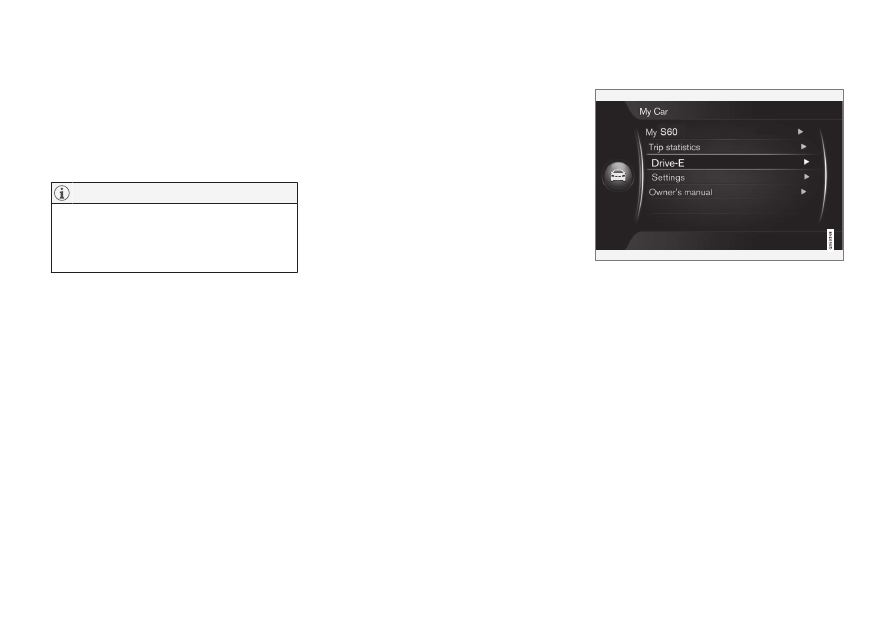Volvo S60 Cross Country (2018 year). Manual - part 17

STARTING AND DRIVING
293
•
Active Eco Coast: Long coasting without
engine braking = Low consumption
and
•
Deactivated ECO function: Short coasting
with engine braking = Minimum consump-
tion.
However, to achieve optimal low fuel con-
sumption, Eco Coast in combination with
short coasting distances should generally be
avoided.
Activating Eco Coast
The function is activated when the accelerator
pedal is fully released, in combination with the
following parameters:
•
ECO button activated
•
Gear selector in D position
•
Speed within the range of
approx. 65-140 km/h (40-87 mph)
•
The road's downhill gradient is not steeper
than approx. 6%.
Deactivate Eco Coast
In certain situations it may be desirable to deacti-
vate the Eco Coast function. Examples of such
situations include:
•
on steep downhill gradients - to be able to
use engine braking.
•
before an imminent overtaking manoeuvre -
in order to be able to complete it in the saf-
est possible way.
Deactivating Eco Coast and returning to engine
braking can be performed as follows:
•
Press the ECO button.
•
Move the gear lever to manual "S+/-" posi-
tion.
•
Change gear with the steering wheel paddle
shifters.
•
Actuate the accelerator or brake pedal.
Eco Coast - Limitations
The function is not available if:
•
cruise control is activated
•
the road's downhill gradient is steeper than
approx. 6%
•
manual gear changing is performed with the
steering wheel paddle shifters
*
•
engine and/or gearbox are not at normal
operating temperature
•
the gear selector is moved from D- to "S+/-"
position
•
speed is outside the range of
approx. 65-140 km/h (40-87 mph)
More information and settings
The car's menu system MY CAR contains further
information on the ECO concept - see the sec-
tion MY CAR (p. 109).
Related information
•